Best Fighter of World War II
If any single plane can be said to have defeated the Luftwaffe - it is the P-51 Mustang.
The North American Aviation P-51 Mustang was a long-range escort fighter that dominated the European Theater of Operations during the final two years of World War II. Calling it an escort fighter means that its priority was range rather than speed. But it was very fast as well, almost as fast as a short-range interceptor fighter, and that's what made it special.
The P-51 justifiably is legendary. The first prototype, NA-73X, civil registration NX19998, first flew on 26 October 1940.
The test pilot, Vance Breese, took it up for five minutes in the morning, then for another ten minutes in the afternoon. Everything went well.
The P-51 Mustang wasn't even an American idea - it was designed in response to a British specification when it was busy ordering planes to be built in the United States.
The British influence, in fact, would be dominant throughout its World War II career.
As with many (not all) World War II planes, the final form of the Mustang, the one that rocked the aviation world, came into its own only after a long development period.The North American Aviation P-51 Mustang was a long-range escort fighter that dominated the European Theater of Operations during the final two years of World War II. Calling it an escort fighter means that its priority was range rather than speed. But it was very fast as well, almost as fast as a short-range interceptor fighter, and that's what made it special.
 |
| The NA-73X prototype as it prepares for its first flight. |
 |
| Lieutenant Vernon R Richards of the 361st Fighter Group in his P-51D Mustang during a bomber escort mission in 1944. Note the extra fuel tank, he could get all the way to Berlin with that. |
The P-51 Mustang wasn't even an American idea - it was designed in response to a British specification when it was busy ordering planes to be built in the United States.
 |
| Prototype NA-73X flew perfectly in its maiden flight. |
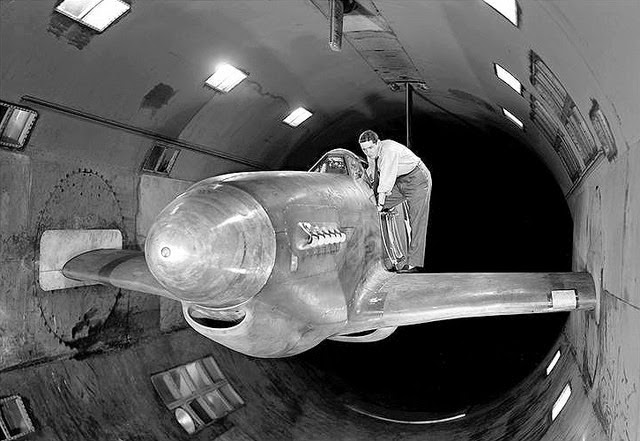 |
| The Mustang undergoing wind tunnel testing. |
North American Aviation responded to the spec. The British were so desperate that they ordered it, sight unseen and before there even was a flyable version. The plane was known as the North American NA-73 at this time. This was well before the American entry into the war, and it was business as usual in the States. The contract was signed on 24 April 1940. This order was placed under the "cash and carry" program, as required by the US Neutrality Acts of the 1930s (later orders under Lend-Lease were put on the books of the USAAF as required by law). A prototype, NA-73X, was finished by 9 September 1940 and flew on 26 October of that year. The first NA-73s were in Great Britain a year later.
It was a phenomenally quick turnaround for American aviation of 149 days after the order had been placed (the Germans, used forced labor and other command-economy shortcuts, could get initial designs out faster, especially late in the war; but they often took much longer early in the war, too). This snappy industrial performance was not bad at all for a country still at peace.
With the pressure on, a previously slack economy making available millions of idle but willing and needy workers, and all sorts of money flooding into the system, American manufacturing proved that it could make more than refrigerators and toasters as Hitler and Goering wanted to believe.
This early version of the P-51 was not a great performer, especially at high altitudes, despite having a good airframe. The problem? As with so many designs of the period, it was the engine, the Allison V-1710. Everything depended upon the engine, and the Allison engine was not cutting it.
The engine, the pride of General Motors, just wasn't good enough. Somewhat perversely, the use of that particular Allison engine was one of the few specific demands made by the British Purchasing Commission when they put out their specification. Edgar Schmued, who was the chief designer at North American Aviation but who had little experience with cutting-edge fighters, went to work to come up with a better solution.
 |
| The Allison V-12 was not a bad engine, it just wasn't right for the Mustang. |
All sorts of innovations went into the plane. Schmued included laminar flow airfoils, an advanced radiator, and conic sections that reduced wind drag. These were all innovations based on extensive wind tunnel research. The P-51 Mustang was designed to carry four 30-caliber M1919 Browning machine guns (later upgraded to six .50 Brownings), two on the wings and two under the nose.
It was an unusual arrangement. The United States Army Air Corps (USAAC) essentially acted as the contractor for the British, building its best plane of the war for somebody else, with little input and no veto on export. The USAAC paid for the first P-51 Mustangs sent over to England under Lend-Lease. The P-51 Mustang also was, according to everything the USAAC understood at the time, a plane without a mission because the concept of fighter escorts of bombers was not part of USAAC theory. This was a novel concept introduced by the Luftwaffe (something for which the Germans are never given credit) that fighter escorts would prevent enemy fighters from shooting down the bombers. Based on outdated theories from World War I and the 1930s, the prevailing theory was that the bombers would simply fight their way through to the target - "the bomber will always get through." The Allies, of course, quickly realized the importance of fighter escorts for bombers after bad experiences with the Luftwaffe.
The P51s began arriving in England in convoys that were exposed to the fiercest period of U-boat sinkings. Once America was in the war and helping out, the USAAC took the ones in England for its own use as part of the Eighth Air Force (VIII Fighter Command). The Americans commenced daylight bombing operations in August 1942. Despite bitter British (and Luftwaffe) experience to the contrary, the American military felt that daylight operations suited the U.S. bombers best due to advanced technology such as the Norden bombsight. The British, more experienced with the current realities of war, continued to bomb at night with less accuracy but also far fewer losses. Even though they bombed in broad daylight, the American bombers often went without escorts of any kind, relying upon their defensive armament. "The bomber will always get through," after all. This was a mistake that led to heavy losses, and accuracy was impaired anyway. The American bombers often wound up over the wrong cities entirely, or the bombardiers were unable to concentrate because they were under attack. So, the USAAF bombers suffered high losses without much gain of accuracy.
The British, though, had it right: daylight bombing, especially at long ranges without fighter cover, subjected the attackers to unsustainable losses. The infamous Schweinfurt-Regensburg mission against ball-bearing factories in August 1943 was absolutely devastating, with the Americans losing no less than 60 bombers, with much more damaged beyond repair. It was a loss rate of 16%, not even counting the cripples that barely made it back to base. No air force could sustain such losses. The 14 October 1943 attack was even worse, losing 77 B-17s for an astonishing loss rate of 26%.
As so often happens in war, though, disaster sowed the seeds of recovery and triumph. The USAAC boys were stubborn: to start bombing at night like the British would be a galling admission of defeat and bull-headedness. Virtually every fighter in the arsenal was tried out as an escort: the P-38, the P-47, even the Boeing YB-40. While the fighter had an outstanding 4 hours 45 minutes of flight time (compared to barely an hour for the Spitfire or Bf 109), that wasn't enough to cover key objectives inside Germany. Then someone came up with the idea of an extra 85-gallon fuel tank inside the plane - not normal practice for fighters - and suddenly everything changed.
The P-47 escorts began to be replaced with Mustangs, a process that continued throughout the rest of the war. By the end of 1944, all but one of the 15 escort groups flew Mustangs. As a high-performance fighter with range, it easily overcame the German heavy fighters. It also introduced all sorts of complications in the Luftwaffe fighter strategy, because the vaunted Focke-Wulf 190 was fine enough at low altitudes and even at higher bomber altitudes against bombers, but at high altitudes against P-51s, it was no match. The Luftwaffe had to separate its fighters and concentrate on using the Me-109 at altitude and confine the FW-190 to ground attacks and other lower-altitude roles. The Luftwaffe was already strained, and having to use its fighters in limited roles compounded the problem. This is something, incidentally, that Luftwaffe FW-190 pilots rarely mention in their recounting of World War II air battles, preferring to leave the impression that their favorite fighter - the Focke Wulf - was superior in all of its roles. It wasn't.
With Luftwaffe defenses strained to the maximum, General James Doolittle - famous from the April 1942 raid against Japan - decided to go for the kill. He told the P-51 pilots to stop simply escorting the bombers and actually hunt down Luftwaffe planes independently.
At that point, bomber missions became almost a pretext for fighter sweeps to clear the skies of the Luftwaffe. The Germans remained in the air war until the very end, but the Luftwaffe's effectiveness began an irreversible decline during "Big Week" in February 1944 - sustained attacks against German air manufacturing facilities designed to draw a Luftwaffe response - and the weeks leading up to the 6 June 1944 invasion of Normandy.
The Luftwaffe essentially began to be shot out of the sky once the P-51D was unleashed. Not only were the P51s superior, but there were also more of them, and their numbers just kept increasing. Only the advent of advanced Luftwaffe jet fighters from late-1944 on posed a threat, but they were more interested in shooting down the big bombers than trying to eliminate the P51s that seemed to be everywhere. Just about the only area where the German piston-engine fighters had parity, let alone superiority was in turn radius - a factor not to be discounted because that undoubtedly saved a lot of German pilots' lives. However, most encounters would have been pursuits, where the Mustangs excelled, or single-pass missions, where Mustang with six .50 caliber machine guns was deadly.
The dirty secret of the Wehrmacht was that it relied very heavily on 19th Century technology: horses, barges, and railroads. When mapping out operations in the ETO during 1944/1945, it becomes clear immediately that the Germans were defending the railroads, and once those were interdicted, the Germans began to run out of supplies and were forced to retreat. That had been the case in Russia for years, but not a lot had been known in the West about the course of battles on the Eastern Front. As the Luftwaffe lost its parity over France, the P-51s could turn to destroy railroads, barges, and bridges. This intensified German supply problems. The P-51s also contributed greatly to the success of the Normandy invasion by destroying German troop columns as they advanced, usually at the pace of a marching soldier, to reinforce the German defenders there.
Overall, the Mustang claimed a 2-1 kill ratio, with 4,950 Axis aircraft claimed for the loss of 2,520 Mustangs. Even this, though, minimizes their effectiveness because they destroyed another thousand Luftwaffe planes on the ground. The P-51 did not play much of a role in the PTO - the Pacific Theater of Operations - but did come in handy in 1945 when bases for them were set up on Iwo Jima to escort bombers over Japan. By the final months of the war, the P-51s were cruising virtually unmolested over Japan just as they had been doing over Germany six months earlier. Truth be told, though, the PTO war was essentially won by the time the P-51 appeared there in any numbers. P-51s remained in the USAAF and its successor the USAF into the 1950s, flying mainly ground-attack missions during the Korean War.
While increasingly outclassed by new jet fighters, the P-51 remained iconic in the post-war period. There was a glamor and elegance to the P-51 that the new, faster planes could not match. Plying P-51Cs, stunt pilot Paul Mantz won the prestigious Bendix Trophy from 1946-1948, and actor Jimmy Stewart and partner Joe De Bona won it in 1949. After that, the trophy for piston-engine planes was discontinued, so the P-51 essentially closed out the category and an era of flight.
There's no point in copping out on this, though, even though some will disagree. Even though the British reaped huge benefits from the Spitfire and may not even have survived without it, in terms of sheer effectiveness as a World War II machine, the Mustang must be judged the war's best fighter. It basically cleared the skies, something no other fighter in the world could do. When German veterans spoke about Allied fighters, they would joke a bit about the "Spitfeurer" and recount tales of brave encounters; but when the P-51 came up, there was no such bravado. It is the difference between talking about a pro boxer, who you might get lucky and knock out, and the Grim Reaper; you might hear brave tales about fighting the former, but you'll never hear many jokes about the Mustang. That thing was murder incarnate, and when a Luftwaffe pilot saw one, he was lucky to see the next day.
However, the British have the last laugh in this argument anyway, because the best, or at least most effective, fighter of World War II was a British fighter: the P-51D Mustang. The reason, besides the fact that the fighter was only built at British request and to exacting British specifications, was that the Mustang was a big, fat nothing with its original Allison engine.
And how about Edgar Schmued, the plane's designer, the best aircraft designer of them all, the Unsung Hero of the Allies in World War II who you've probably never heard of and likely never will anywhere else?
Mr. Schmued was German, born in Hornbach, a municipality in the Südwestpfalz district, in Rhineland-Palatinate, Germany. So, in a sense, the best fighter of World War II also was German: the P-51. It was a product of German design, American manufacturing, and British wartime experience and engine - the best of all possible combinations. Sometimes, indeed, it's a funny world.
2019
The Best Fighter of World War II?
It has become a huge matter of pride over which fighter was better, the Mustang or the British Spitfire. Both were excellent fighters. On the one hand, the Mustang did not even come into use until late 1943, while the Spitfire was busy saving Britain during the Battle of Britain. However, there is no reason to stop there: the Spitfire could only come into prominence because the Hawker Hurricane dominated British defense throughout 1940. The Spitfire was not even the best British fighter by some standards: the Hawker Hurricane shot down more planes, and the British could never hope to clear the skies with the Spitfire the way the Mustang did.There's no point in copping out on this, though, even though some will disagree. Even though the British reaped huge benefits from the Spitfire and may not even have survived without it, in terms of sheer effectiveness as a World War II machine, the Mustang must be judged the war's best fighter. It basically cleared the skies, something no other fighter in the world could do. When German veterans spoke about Allied fighters, they would joke a bit about the "Spitfeurer" and recount tales of brave encounters; but when the P-51 came up, there was no such bravado. It is the difference between talking about a pro boxer, who you might get lucky and knock out, and the Grim Reaper; you might hear brave tales about fighting the former, but you'll never hear many jokes about the Mustang. That thing was murder incarnate, and when a Luftwaffe pilot saw one, he was lucky to see the next day.
However, the British have the last laugh in this argument anyway, because the best, or at least most effective, fighter of World War II was a British fighter: the P-51D Mustang. The reason, besides the fact that the fighter was only built at British request and to exacting British specifications, was that the Mustang was a big, fat nothing with its original Allison engine.
 |
| North American XF-82 - an experimental P51 combination. |
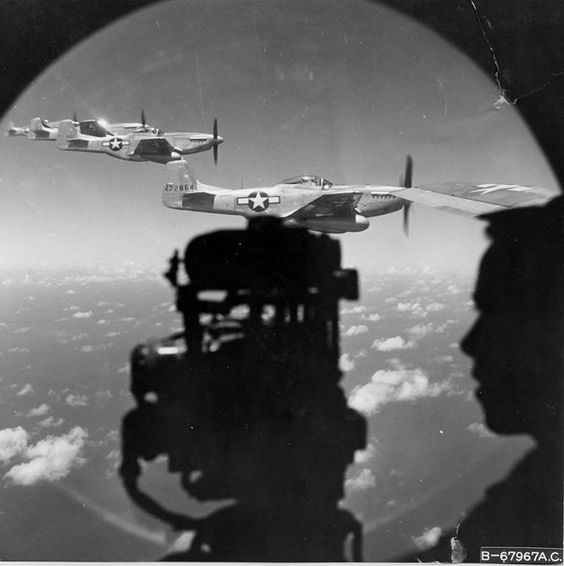 |
| P-51 Mustang fighters beside a B-29 Superfortress bomber, Pacific Theater, 1945. |
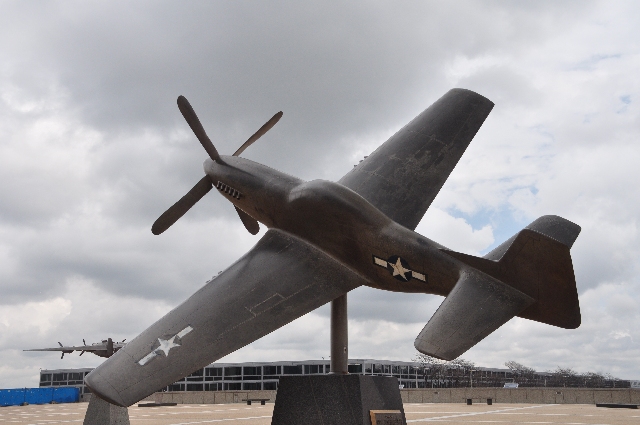 |
| The P-51 Mustang sculpture at the US Air Force Academy in Colorado Springs, Colorado. Author's photo. |
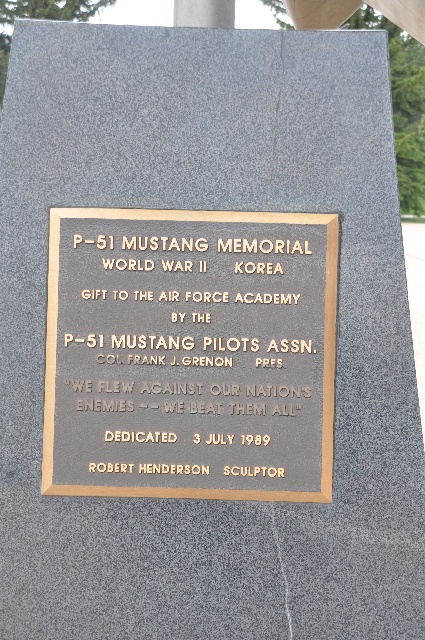 |
| Author's photo. |
2019
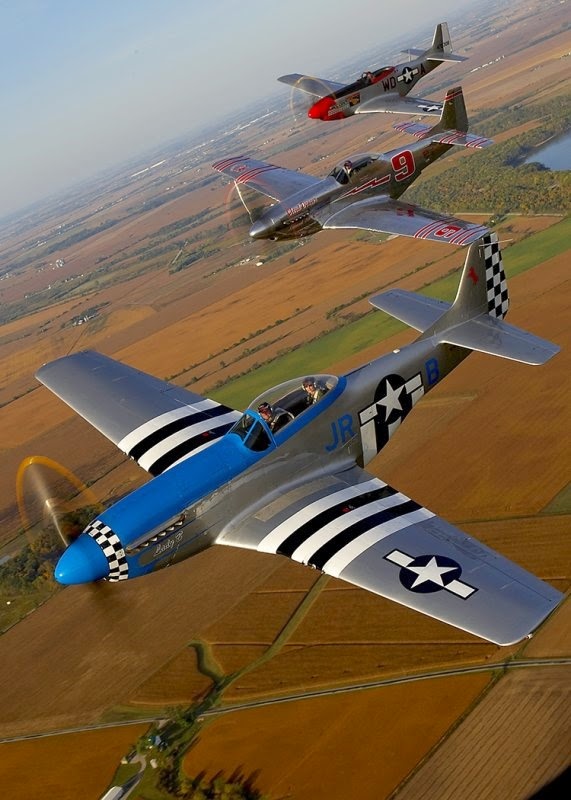

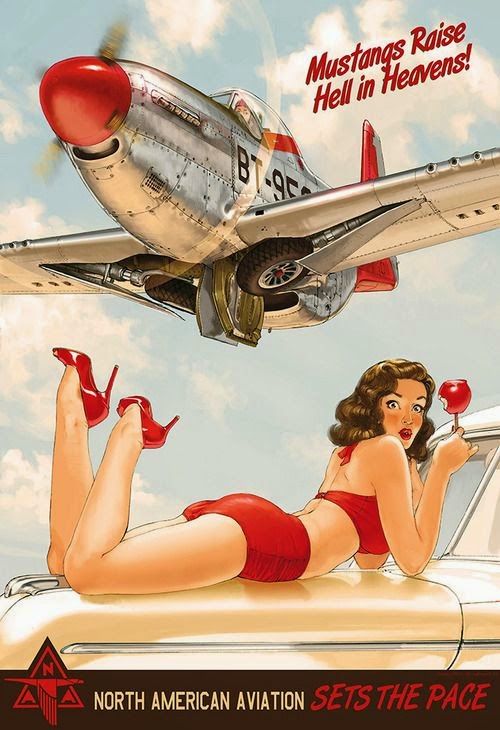
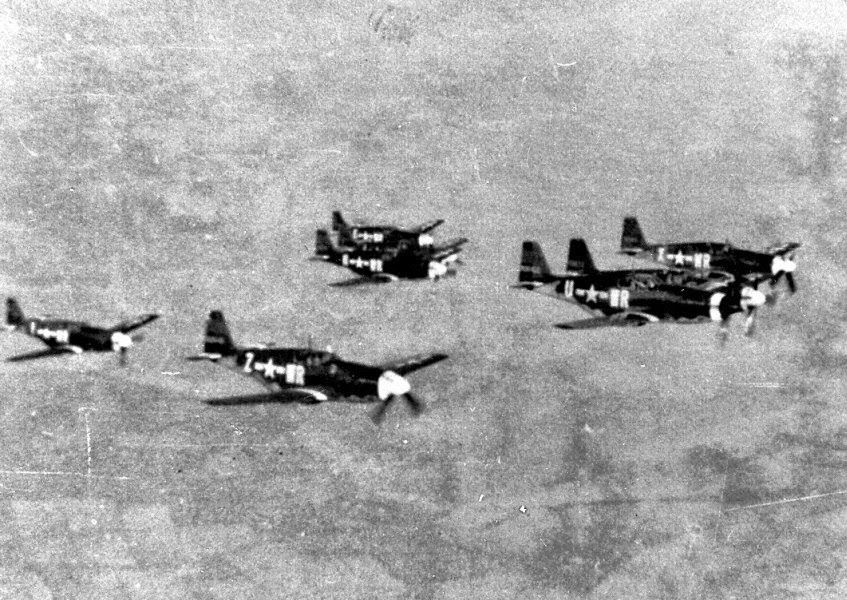
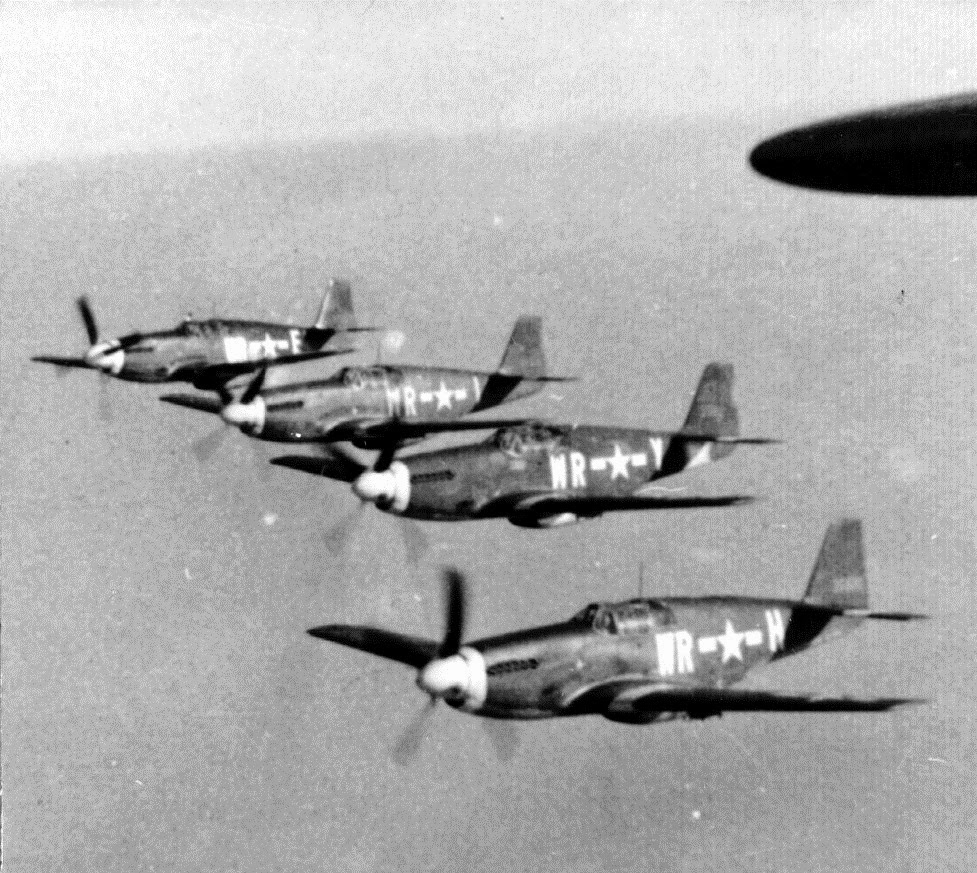
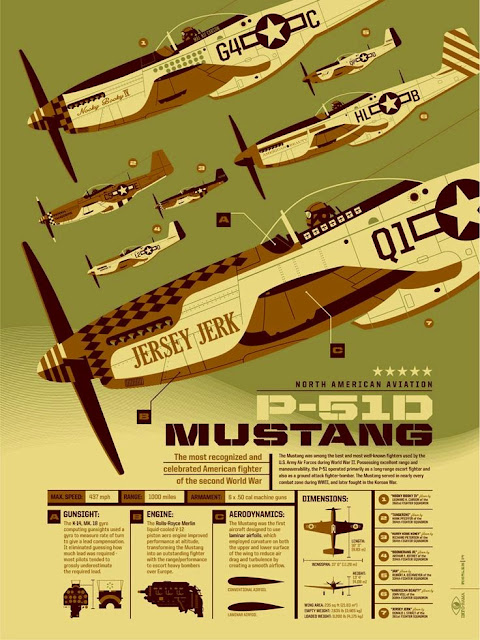
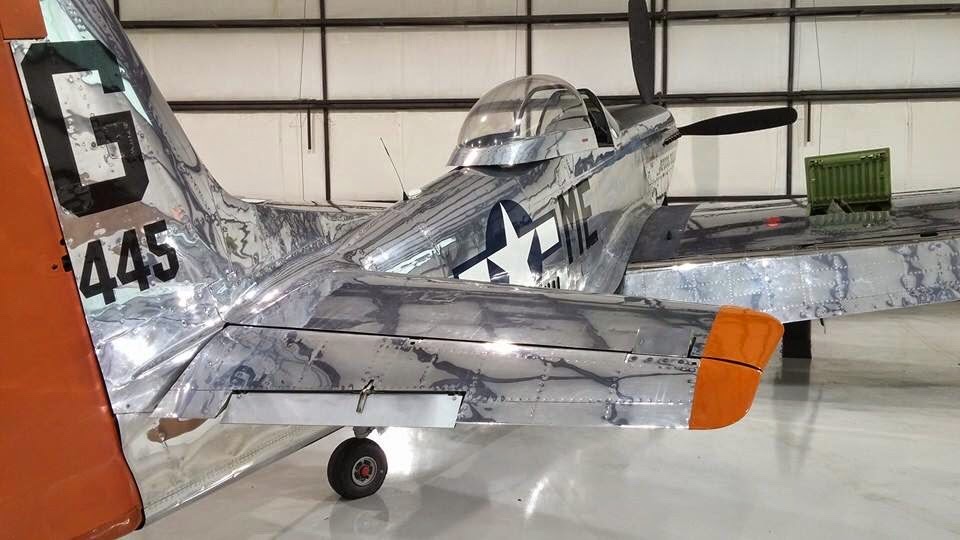
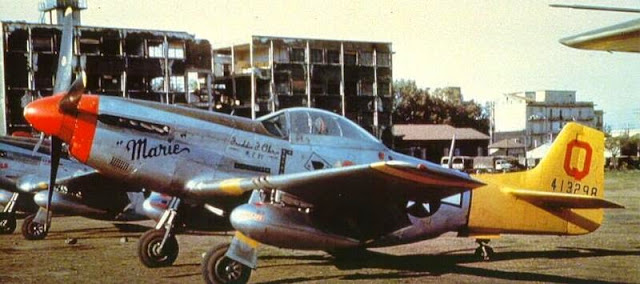
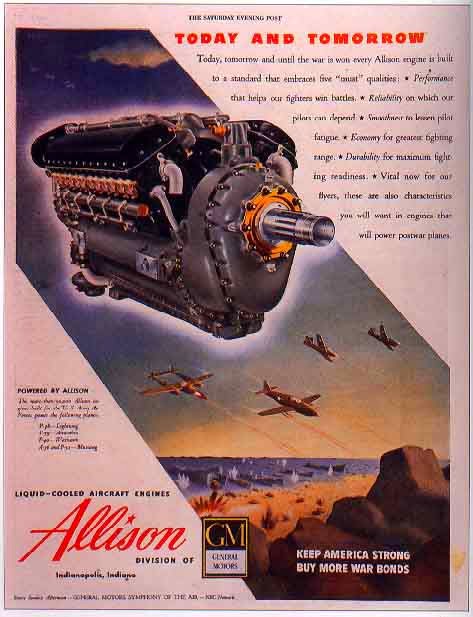
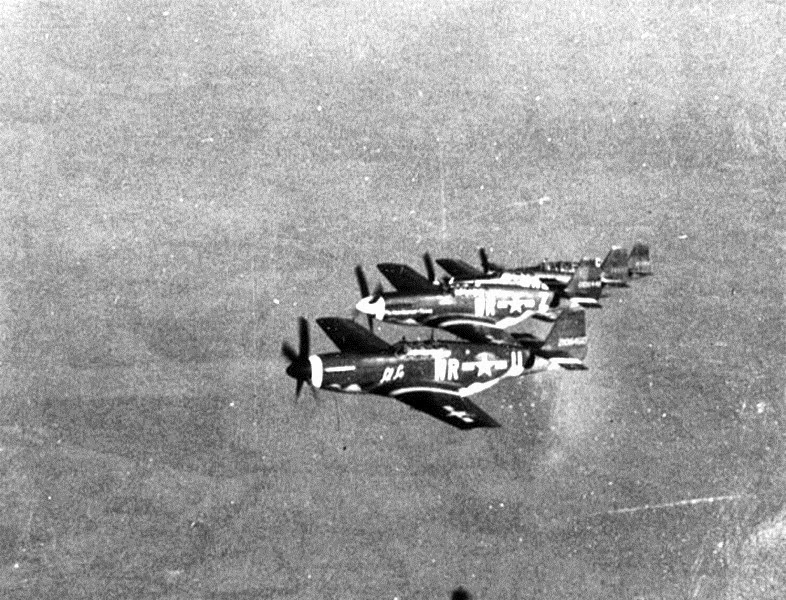
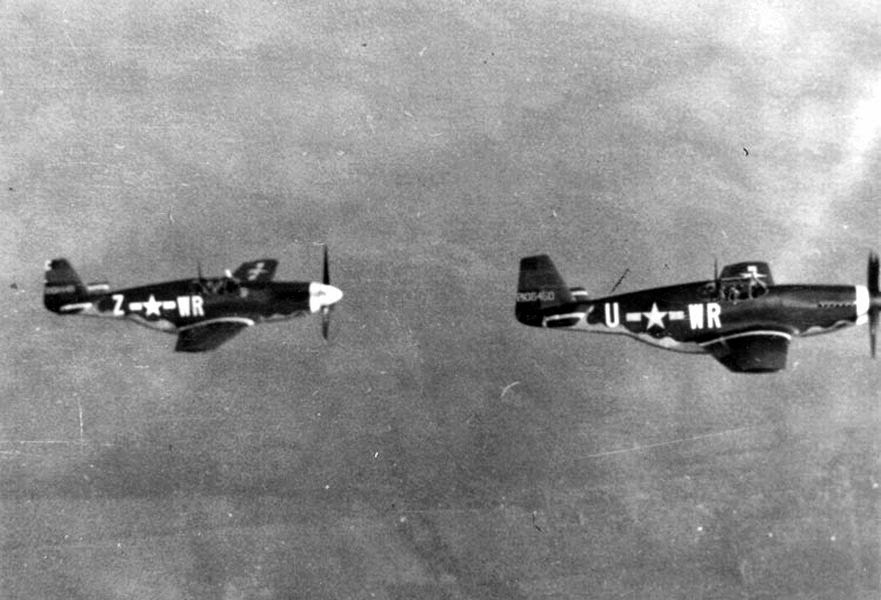

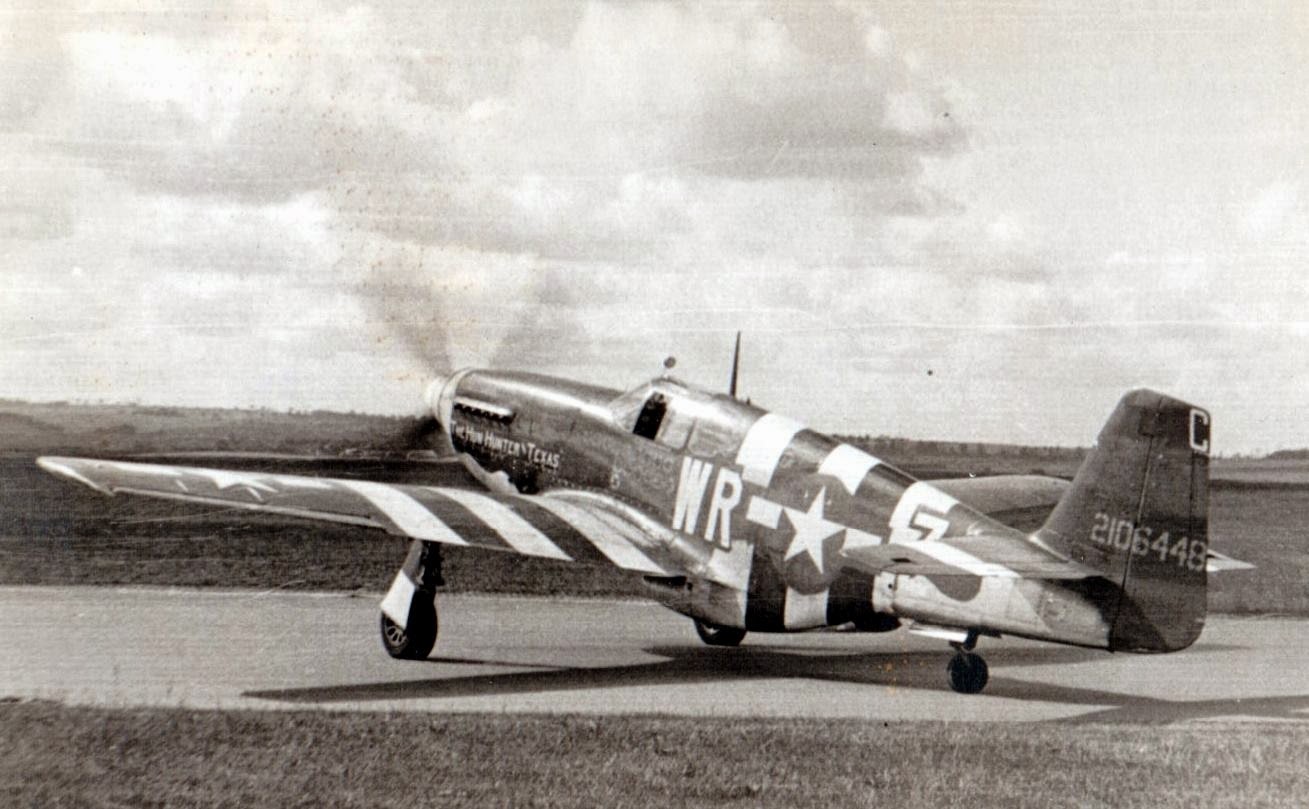
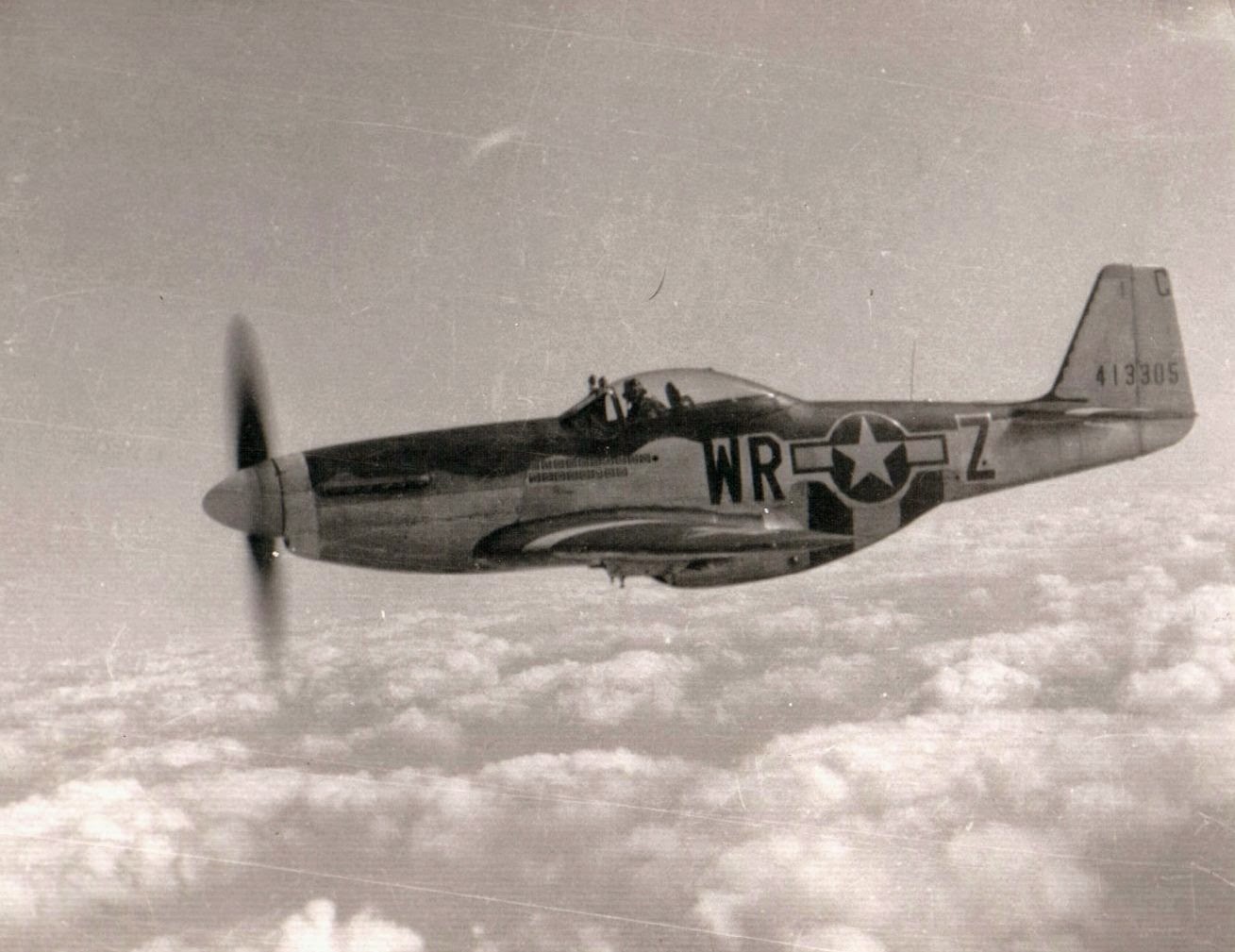
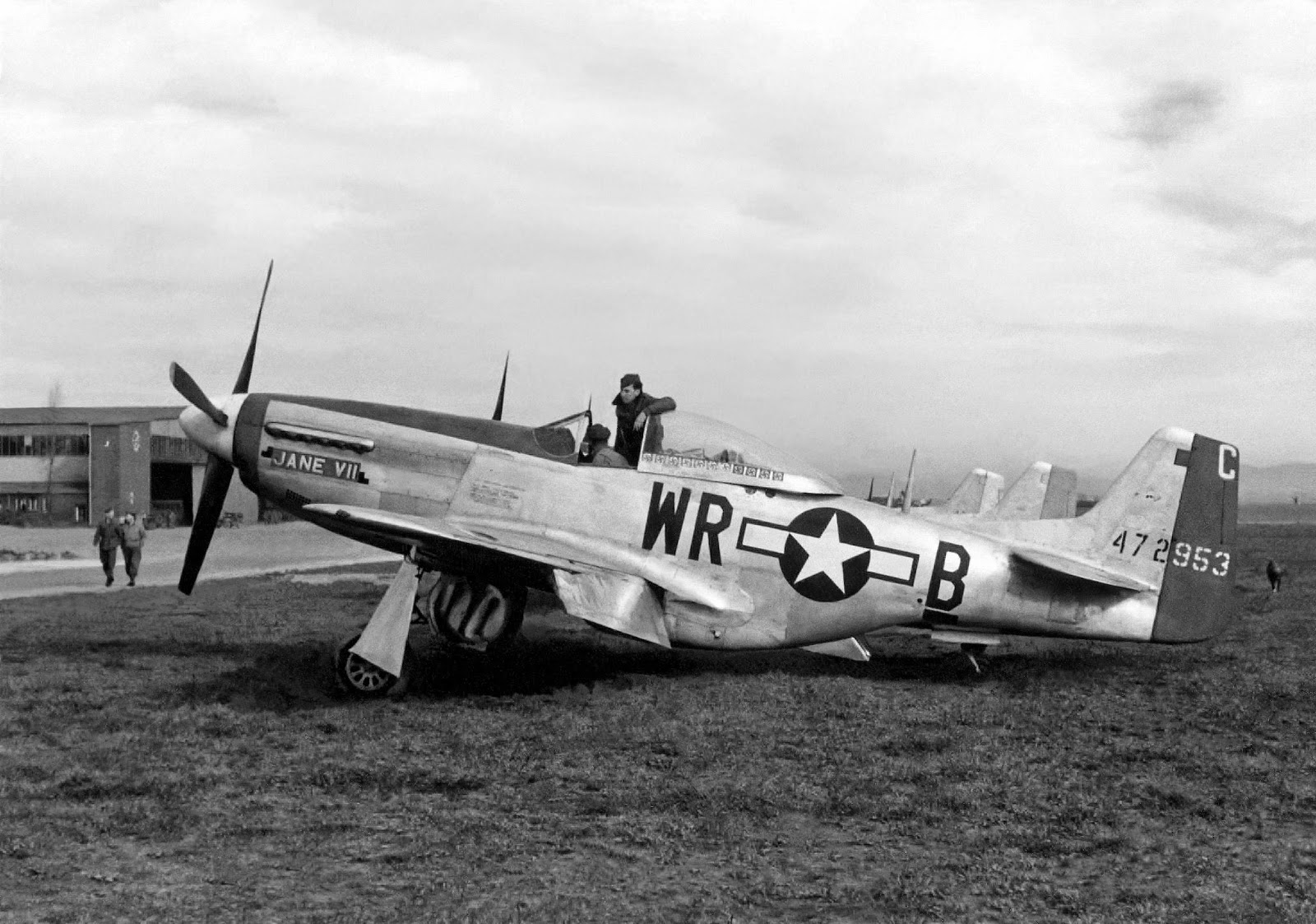

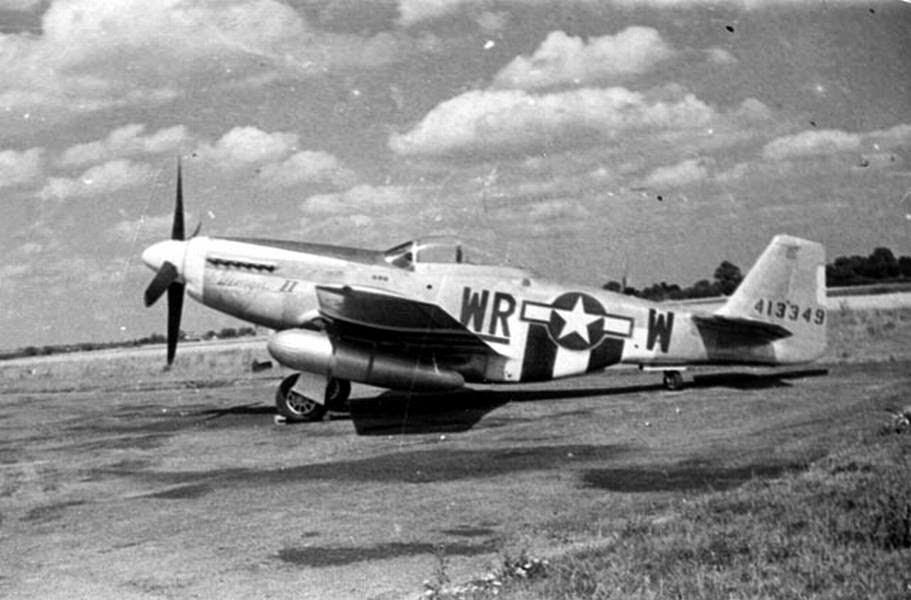
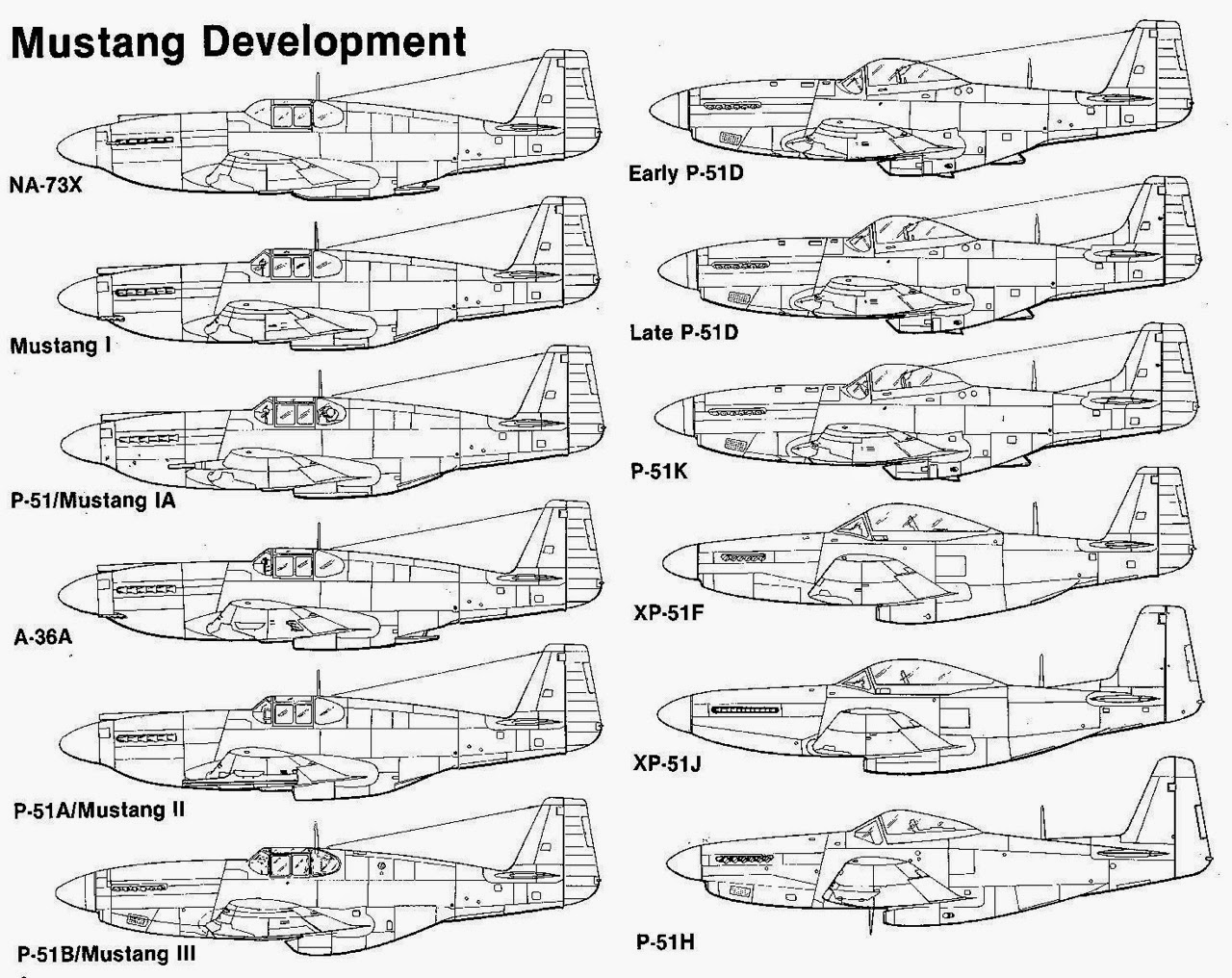
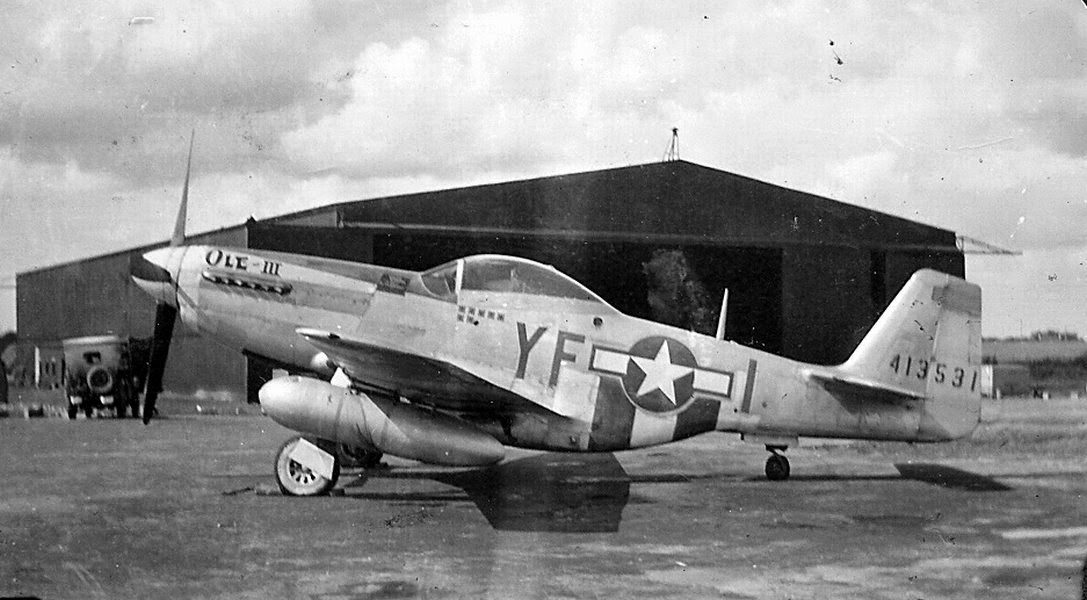
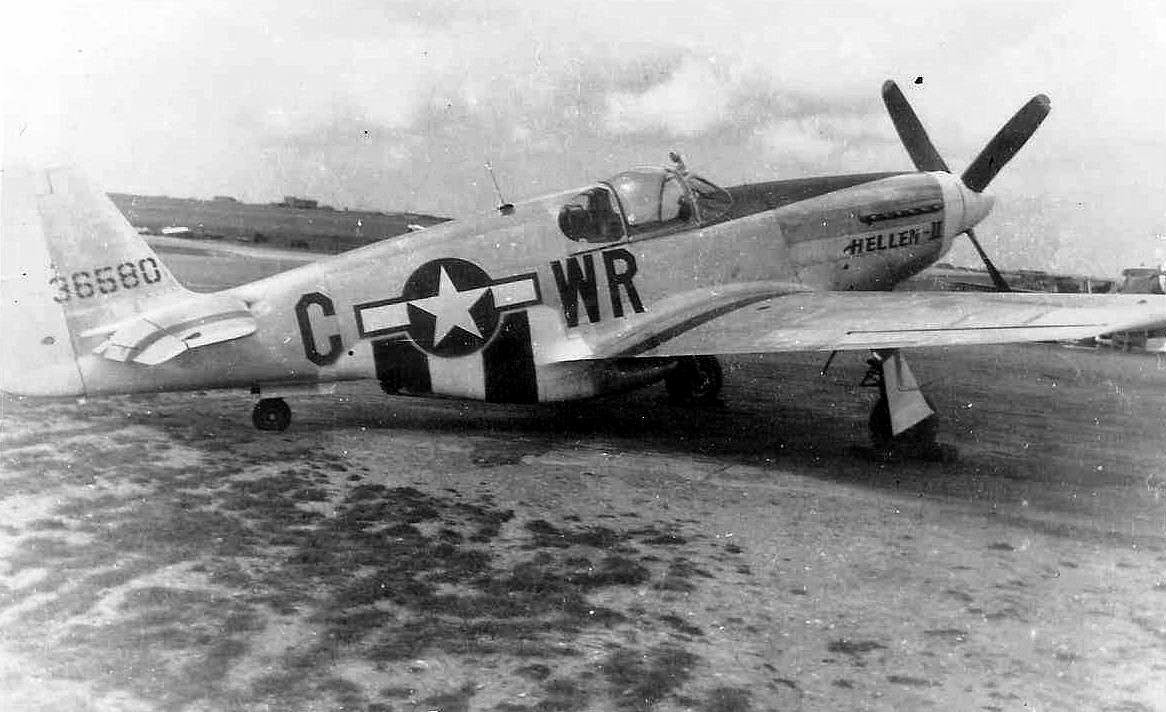
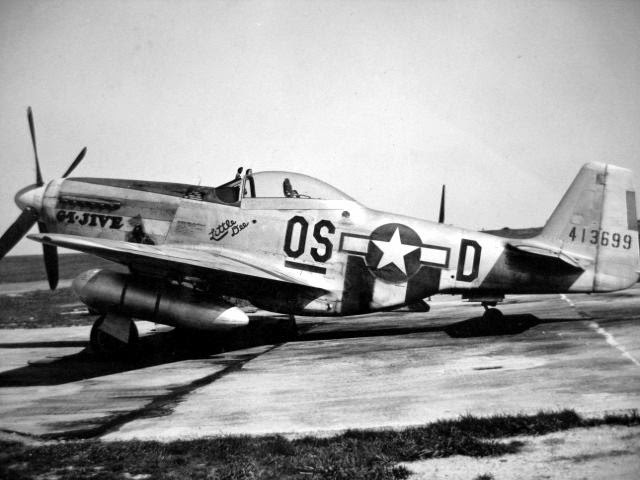
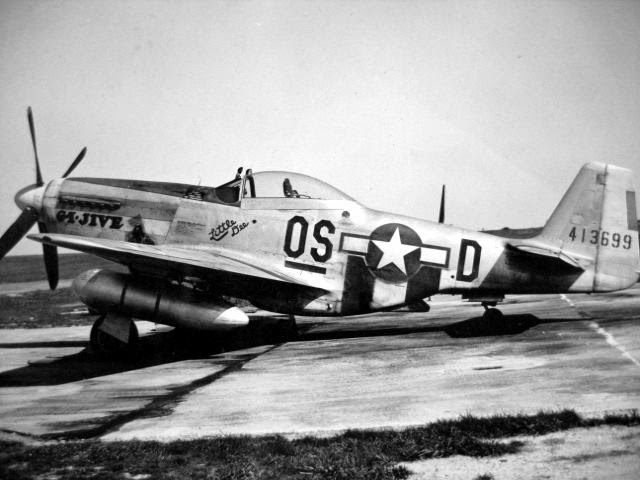
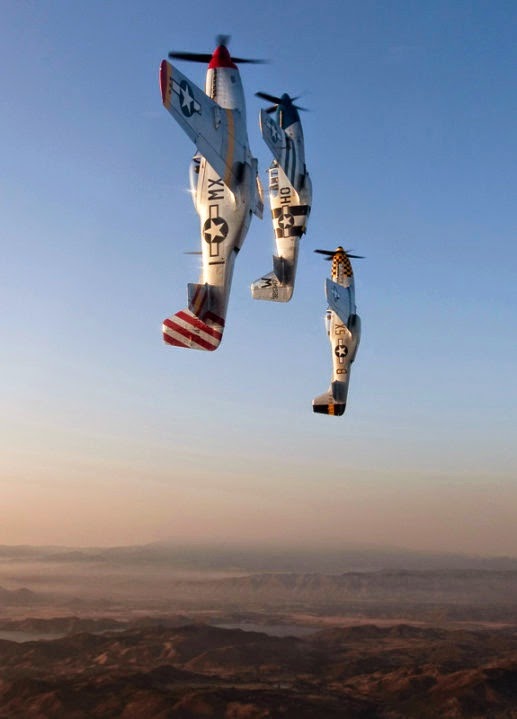


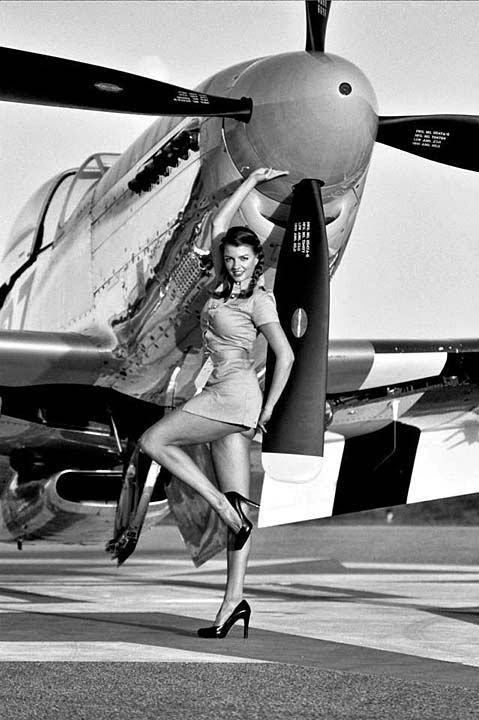
Great piece! Don't forget Jimmy Stewart - a P51 pilot!
ReplyDeleteThanks for the compliment, Chris. I actually didn't know that Mr. Stewart owned a P-51, I thought he was solely into bombers. I dug up a picture and added it, thanks for the information.
DeleteP-51 body by North american. Who does the other "body" belong too?
ReplyDeleteWhere is she today?
Body (airframe) by North American. Who does the other "body" belong too? It'd be interesting to know about her.
ReplyDeleteMustang Sally?
DeleteMustang Sally?
ReplyDeleteBTW: those are not captured P-51Ds a couple photos above. They are Texas ANG Mustangs that were repainted to be German fighters in the movie "Fighter Squadron" (1948)
ReplyDeletehttp://www.imdb.com/title/tt0040353/reviews?ref_=tt_urv